20+ SAMPLE Program Management Plan
-
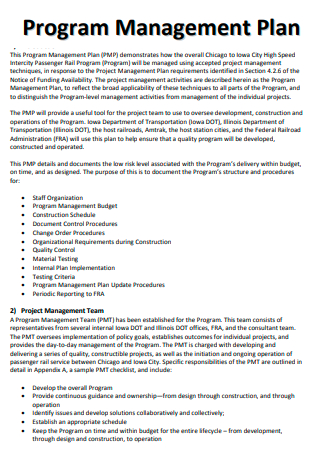
Program Management Plan Template
download now -
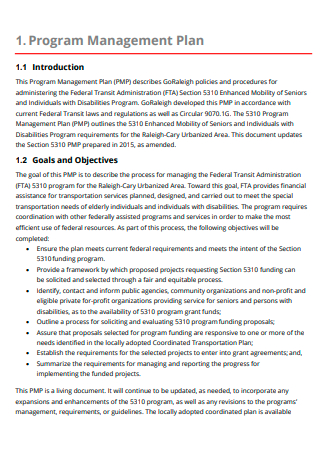
Basic Program Management Plan
download now -
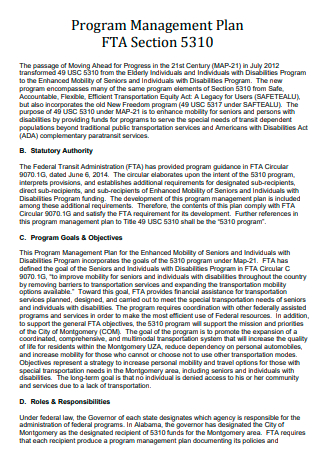
Program Management Plan Section
download now -
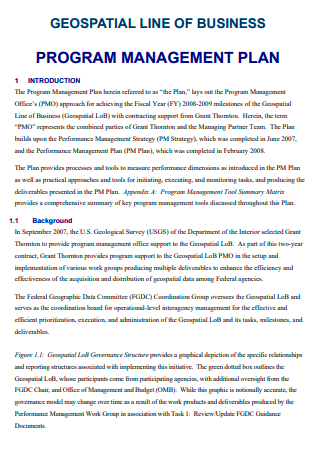
Line of Business Program Management Plan
download now -
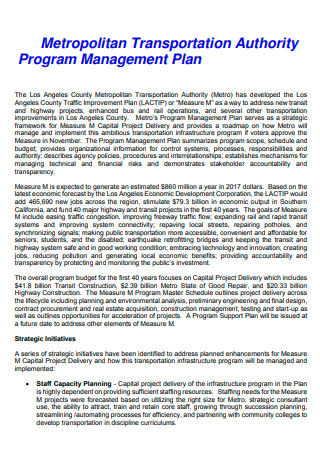
Transportation Authority Program Management Plan
download now -
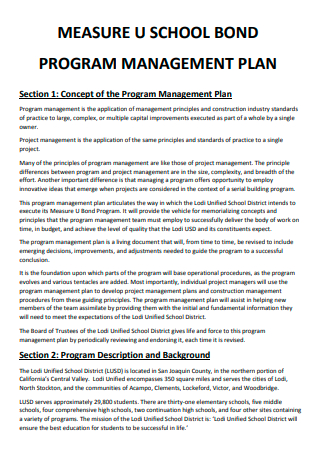
School Bond Program Management Plan
download now -
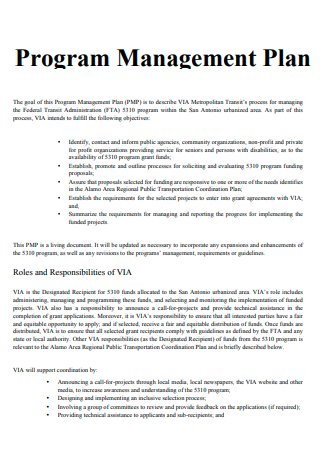
Program Management Plan Example
download now -
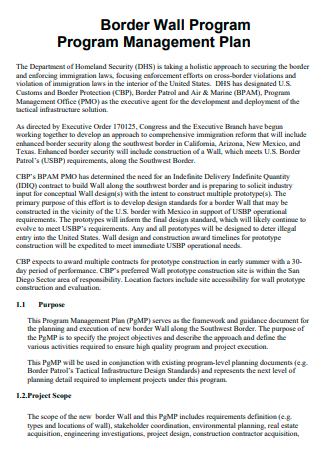
Border Wall Program Management Plan
download now -

Program Management Plan For Air Force
download now -
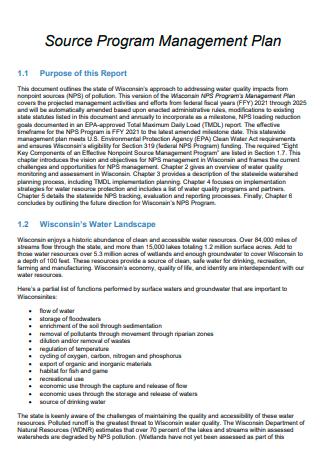
Source Program Management Plan
download now -
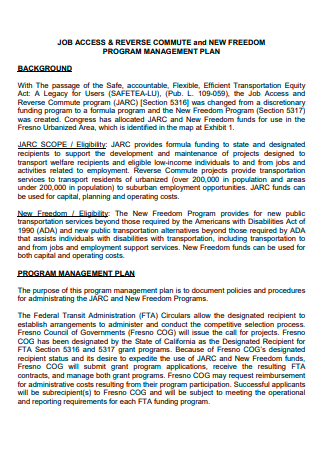
Program Management Plan in PDF
download now -
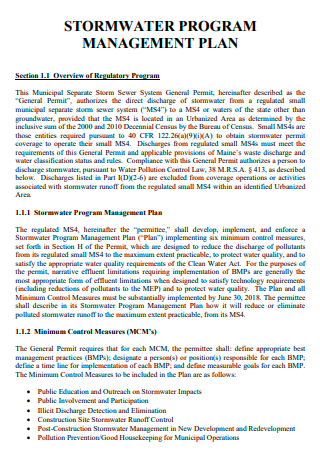
Storm Water Program Management Plan
download now -
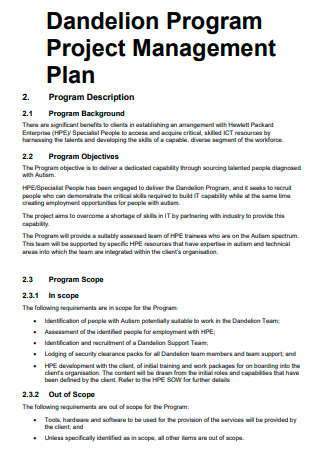
Program Project Management Plan
download now -
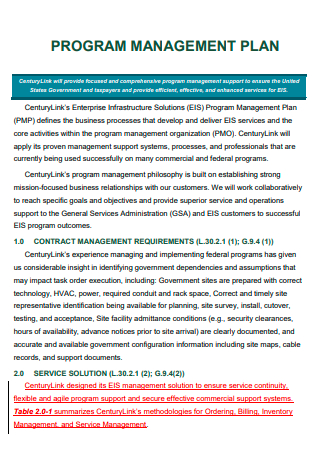
Draft Program Management Plan
download now -
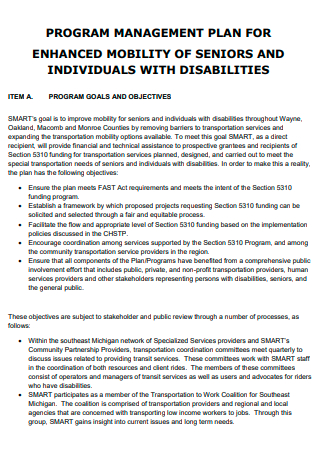
Standard Program Management Plan
download now -
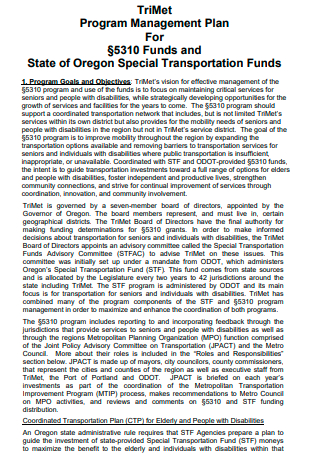
Program Management Plan For Funds
download now -
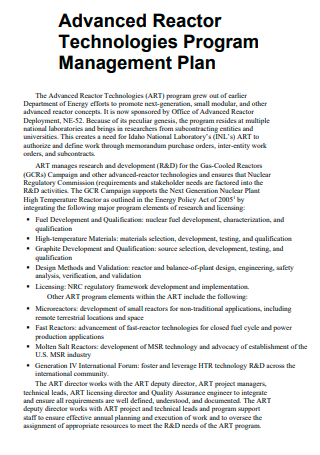
Advanced Reactor Technologies Program Management Plan
download now -
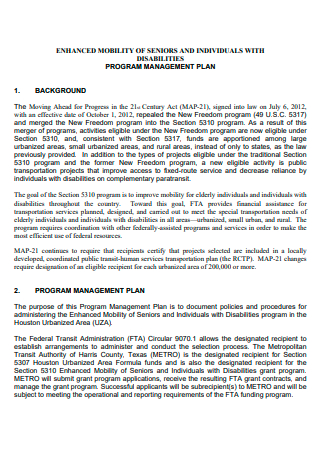
Printable Program Management Plan
download now -
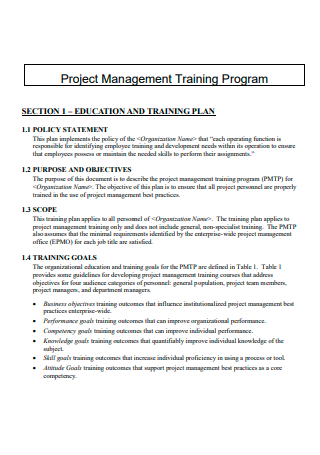
Training Program Project Management Plan
download now -
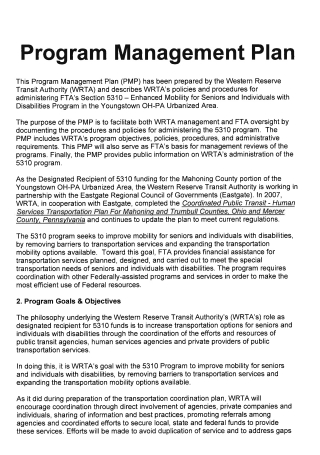
Formal Program Management Plan
download now -
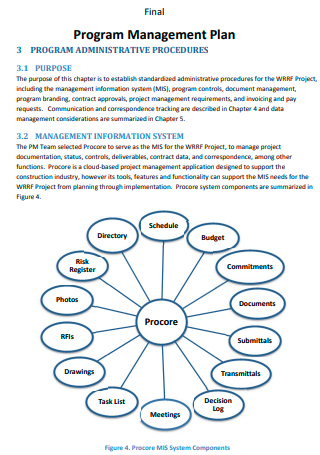
Final Program Management Plan
download now
FREE Program Management Plan s to Download
20+ SAMPLE Program Management Plan
What is a Program Management Plan?
Different Types of Program Management Plans
Basic Components of a Program Management Plan
How to Write a Program Management Plan
FAQs
What is the purpose of program management?
What are the major principles of management?
What are different types of program management styles?
What are some examples of program management plans?
What is a Program Management Plan?
A program management plan is a clear, comprehensive and well-integrated written document which is generally used for the accurate execution, and management of a specific program or project of the business or organization. It is an effective strategic management tool which helps program developers, project managers, and other professionals in other fields and industries to define the overall program governance which includes project initiatives, standards, benefits realizations, practices, resources, related management plans and procedures and other methods and strategies used in program planning, monitoring, and controlling. As a roadmap for the development and management of projects and programs, it facilitates logical planning in order to attain success in various program management projects.
Based on a statistical report, there are only 46% of companies and organizations that make project management a priority and due to the lack of attention to the importance of management software and solutions in many projects and programs, companies and organizations have experienced failures in their projects and programs up to 67%. Business firms and organizations that neglect program management also fail on more than half of their programs. Program developers and project managers in all business firms and organizations need to prioritize program management because it has a tremendous impact in effectively organizing the incremental flow of their respective projects and programs. Thus, all kinds of project managers, operational managers, program managers, system developers, project supervisors, and other managers should effectively create a compelling and well-coordinated program management plan.
Different Types of Program Management Plans
Michel Thriy wrote in the book Program Management that programs constitute the missing link between the executive level strategy and the projects and operations that will enable it to deliver value. He added the program management concerns the harmonized management of a number of projects and other actions that will produce competitive advantage. Moreover, you need to understand the different types of program management plans that you and other project managers, program developers, software engineers, and other professionals will use for ensuring the high level program management of their projects, programs, services, and/or other activities. Here we will explain to you about the different types of program management plans:
1. School Bond Program Management Plan
A school bond program management plan is a blueprint with the aim to execute school bond program strategies in order to provide the vehicle for thinking back fundamental concepts and principles that the program management team should employ. This will help them to successfully deliver the body of work on the right time, in budget, and reach the level of quality that the school district and its constituents expect. This type of program management plan needs to be revised from time to time to incorporate emerging decisions, improvements, and adjustments necessary to guide the program to a successful conclusion. Typically, each project manager will use the program management plan to design project management plans and construction management procedures from the guiding principles. Plus, this plan will guide in assisting new members of the team assimilate by providing them with the initial and critical information they will need to attain the expectations of the school district.
2. Training Program Project Management Plan
58% of organizations report more defined processes and practices as their key step to project success especially when they are using a project management plan as reported by PMI. Internal training, outsourced training, industry conferences, management training, technical skills training, time-management program, leadership program and personal development training program are some examples of training programs. A training program project management plan is a document that describes the project management training program for a company or an organization. Using this program management plan ensures that all project personnel are properly trained in the application of project management best practices. When preparing a training program project management plan, outline the important sections and specify each major point. For example, indicate the policy statement, purpose and objectives, scope of training plan, and training goals such as business objectives, performance goals, competency goals, knowledge goals, skills goals, and attitude goals.
3. Transportation Authority Program Management Plan
In a transportation authority program management plan, it fully describes the policies and procedures of a transportation authority for administering a particular program for the safety of the people in the community when they are taking transportation. Like other program management plans, this plan will also continue to be updated, as necessary in order to include any expansions and enhancements of the said program, as well as any revisions to the programs’ management, requirements or guidelines. Do you need to construct a systematic program management plan for a transportation authority? Write the introduction, goals and objectives, management strategies and other aspects. Some examples of goals and objectives that you may include in this plan are to ensure that the plan meets current federal requirements and meets the intent of the program, to provide a framework by which proposed projects requesting funding can be solicited and selected through a fair and equitable process, to establish the requirements for the selected projects to enter into grant agreements and to summarize the requirements for managing and reporting the progress for implementing the funded projects.
4. Maintenance Program Management Plan
Maintenance programs are important to guarantee the maximum efficiency and availability of production equipment, utilities and related facilities at best cost and under satisfactory conditions of quality, safety and environmental protection. Setting a maintenance program management plan is essential for proper management of the organizations so that they are able to reflect their goals and work toward successful planning, implementation and evaluation. In order to be successful in a maintenance program, it is important for project managers to apply these integral elements: work order management, technology empowerment, asset and maintenance intelligence, and transitioning from reactive to proactive maintenance. Thus, preparing a clear and cohesive maintenance program management plan helps companies and organizations to enhance their quality and output, increase their equipment uptime and Overall Equipment Effectiveness (OEE), minimize costs and many others.
Basic Components of a Program Management Plan
In this section, you will learn how to construct an integrated and professional program management plan. But you need to learn about the different kinds of components of a program management plan. Include the following elements for you to create a professional piece of writing:
Define the totality of the work and the overall boundaries of the program that you will be managing and developing. Outline the project statement of work, indicate major deliverables, determine major constraints, and lost scope exclusions. Program Management Strategies: Classify the program management activities, and strategies in phases and content blocks. Some examples of program management strategies are finalizing project details, setting clear expectations, defining milestones, and more. Indicate the dates in which the contents of the project management will be accomplished. Conclusion/Summary: Create a summary of the main points of your program management plan. Then, connect the value or outcomes of the core points of your program management plan.
How to Write a Program Management Plan
Briana Whiting defines program management as the oversight of multidimensional projects which are grouped together so that a company or an organization can reap benefits and attain objectives that cannot be fulfilled as effectively if the projects are managed individually. If you need to write a comprehensive program management plan, it is crucial that you include these elements: mission, guiding principles, value propositions, destination points and areas of focus/strategies. Below are some easy-to-follow tips that indicate how to write a clear and structured program management plan
1: Explain the Purpose of the Program Management Plan
Program management is not just a collection of similar projects or organizing projects under the same umbrella. Explain the main purpose of your program management plan as you tell the readers of your management plan that it outlines the specific goals, objectives, and strategies to help in fostering growth through innovation, market expansion, digital transformation and efficiencies, as well as it also balances the resources across projects, allowing the company or organization to fund, prioritize, optimize resource capacity and manage interdependencies and other conflicts. Project managers and program developers need to clearly explain the main purpose of their program management plan.
2: Identify the Goals and Objectives
What are your primary goals and objectives, deliverable program management standards, and your success criteria for your program management plan? Write in this part that you are developing a roadmap for program management to analyze methods and strategies to measure how you will progress toward reaching your goal and you will set a system of authority or hierarchy based on the context of your organizational structure. For example, you want to designate the suitable tasks according to each team member’s knowledge, skills and abilities by making your employees transition to other departments so that they can expand their work productivity and increase their skills set.
3: Define the Roles and Responsibilities of the Program Management Team
After that, it is important to add the description of the roles and responsibilities of the program management team. Tell how your program management team will manage the change you create while transforming as new information is acquired, operate strategic execution moves across the organization, create value that needs to be measured through the life of the program, and continue your team communication, collaboration and coordination cross-functionally throughout the organization. Highlight how your program management team can leverage program management practices as you translate strategy into actionable goals.
4: Develop a Summary of the Program Management Activities, Standards, and Expectations
Create the summary of the program management activities, program management standards, and client/stakeholder expectations. Document and highlight the core points of your program management plan. Illustrate the purpose, statistical techniques, analysis and evaluation process, data collection, discussion and other outstanding program management results. Be accurate while outlining your program management activities, standards, strategies and techniques.
5: Set Clear Timeline of the Program Management
Design a clear timeline to help guide the implementation of the program management plan. Explain which program management activity or task has to be performed and when it will be completed and how you and your program management team further elevate the quality of the project, program or service.
6: Proofread and Prepare the Overall Plan
Review your overall program management plan and make sure that you fully add all the major points in your document. Highlight the link between specific program management goals, objectives, resources, strategies and methods used for the fulfillment of the objectives, and the evaluation of the project managers or program developers involved in the program management plan. If you realize that you miss several sections that require more key information, we highly recommend that you edit and revise the document as soon as possible.
FAQs
What is the purpose of program management?
The purpose of program management is to allow the company or organization to fund, prioritize, upgrade resource capacity, and manage conflicts and interdependencies. With program management, it ensures people and teams to maintain their focus and collaboration across different departments who are working together to fulfill a shared strategic vision. An effective program management can create change in the organization to promote growth through innovation and market expansion, digital transformation, and efficiencies.
What are the major principles of management?
Synthesized by Henri Fayol, the major principles of management are division of work, authority and responsibility, discipline, unity of command, unity of direction, subordination of individual interest, remuneration, the degree of centralization, scalar chain, order, equity, stability of tenure of personnel, initiative, and Esprit de Corps.
What are different types of program management styles?
Democratic management style, laissez-faire management style, autocratic management style, charismatic management style, coach management style, pacesetting management style, bureaucratic management style, and transactional management style are the different types of program management styles. Democratic management style is all about collaboration between leaders and employees. Laissez-faire management style is when the leaders avoid micromanaging their employees as they allow their employees to work on their delegated tasks independently.
What are some examples of program management plans?
Some examples of program management plans are basic program management plan, line of business program management plan, transportation authority program management plan, school bond program management plan, border wall program management plan, air force program management plan, source program management plan, advanced reactor technologies program management plan, training program project management plan.
To drive the business forward, program developers and program managers should do their best effort in maintaining the good organizational structure of their company, association, firm or institution, That’s why when you create and design a well-integrated program management plan, it is integral that you include these management principles which are planning, organizing, leading, staffing, and controlling. To assist you in writing your program management plan, you can learn and apply the tips aforementioned in this article. Plus, we have included several program management plan samples, school bond program management plan, border wall program management plan, air force program management plan, source program management plan, advanced reactor technologies program management plan, training program project management plan, and other program management plan templates that you can download and use for your management work.
